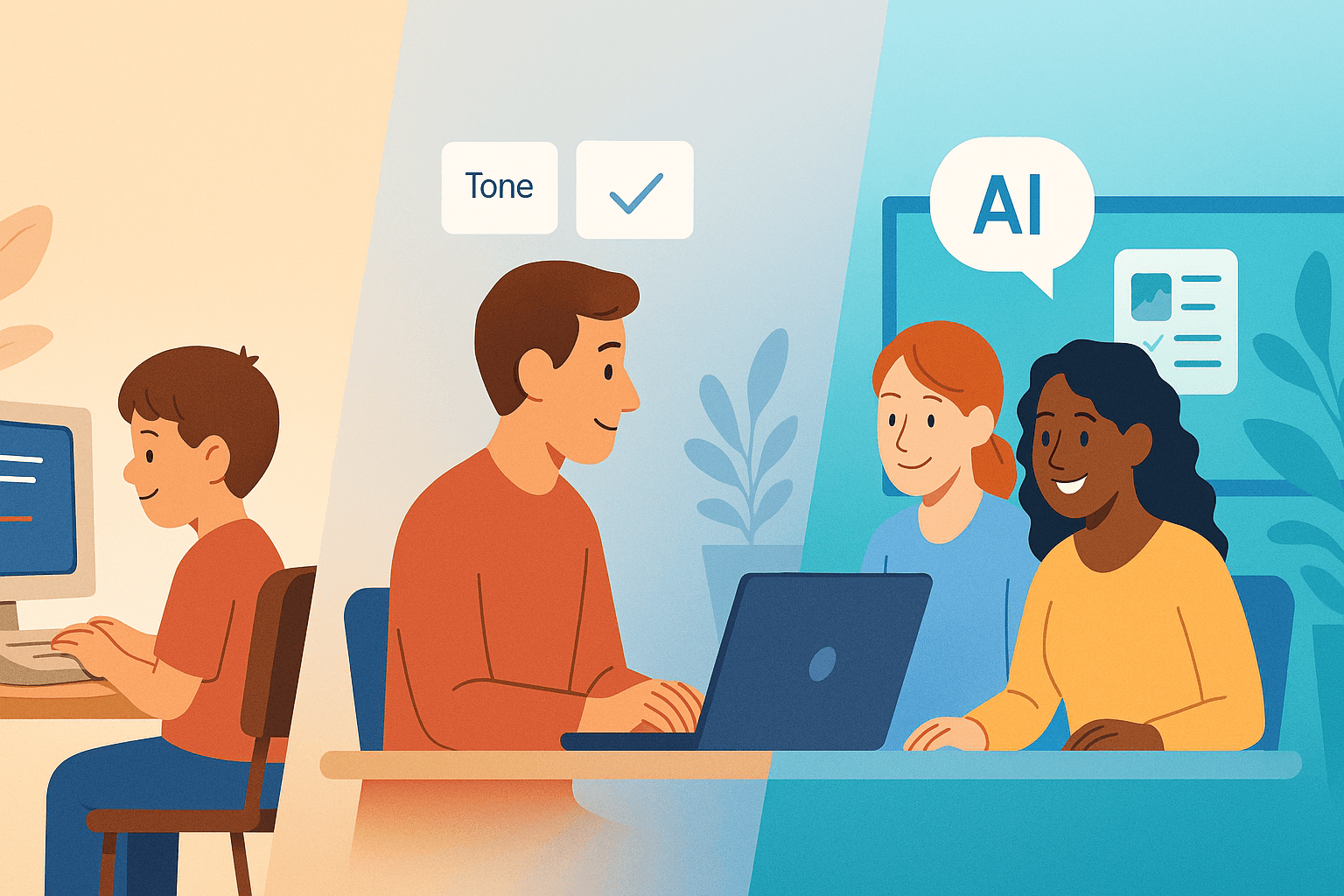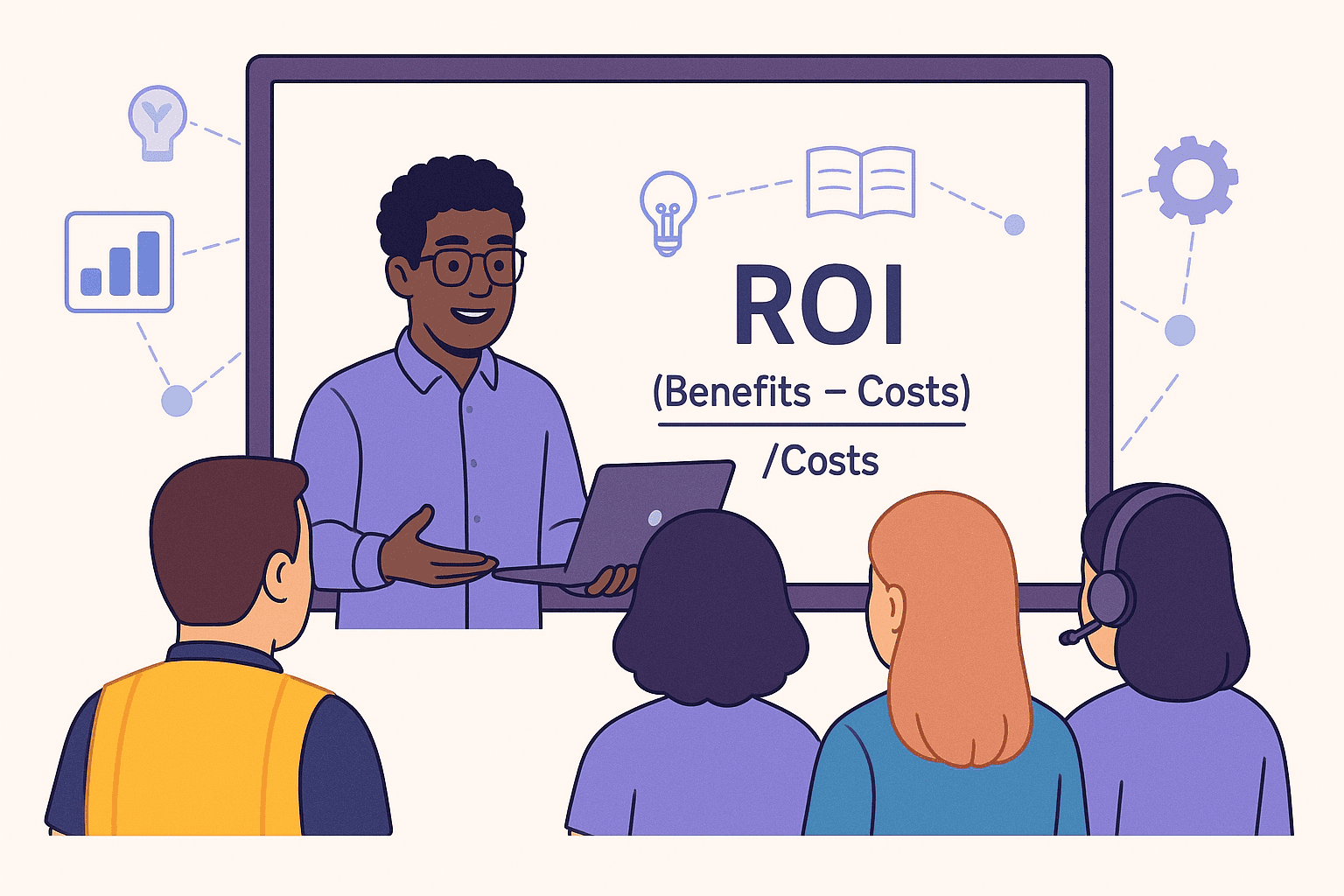5 min
May 19, 2023
What artificial intelligence means for our experience of work
Coleman Numbers

What is meaningful work?
With both of our cofounders, Ethan and Zach, graduating from BYU this past April and me (yeah, the pretentious dude who writes in the plural first person) committing to a bunch of summer writing gigs, we’ve been thinking more closely about the nature of work--specifically about how AI is going to affect what it feels like, day to day, to work.
The 5 Dimensions of Meaningful Work
I read a paper recently called The Ethical Implications of Artificial Intelligence (AI) For Meaningful Work. The authors, Sarah Bankins and Paul Formosa, explore an intriguing blind spot in the AI/workplace discourse: namely, that lots of scholars have already discussed what AI means for the productivity of our work lives, but that few have examined what AI means for the meaningfulness of our work.
Go read the full paper—it cross-sections the problem in insightful ways, drawing on a wide range of useful established theory to treat a topic that we only have a few paragraphs to meditate on here.
But so Bankins and Formosa identify five dimensions of what makes work “meaningful” (all quoted material taken from a section of the paper titled What Constitutes Meaningful Work?):
Task integrity—"opportunity to complete a whole piece of work"; the degree to which tasks in work are integrated rather than fragmented
Skill cultivation and use—"the ability to use and deploy a range of skills at work"
Task significance—the degree to which one’s work is relevant or connected to the world writ large
Autonomy—the degree of freedom a person has in executing their work independent of monitoring, micromanaging, or other forms of external control
Belongingness—how much our work connects us to a wider group of human beings
They proceed to outline how AI, at various levels of implementation, affects these dimensions. They conclude that, if implemented right, AI could enhance a person’s work experience in each of these areas. But the fail states are many and formidable. Shocker.
There’s a lot to unpack there, and the problems warrant careful discussion. But for our purposes, we’re going to focus on the former possibility: how AI can enhance an experience of meaningful work.
As an object lesson to illustrate our points (and to shamelessly plug our product), we’re going to examine the use of Mindsmith by an instructional design professional.
Object Lesson
Task integrity — Mindsmith is equipped to draft outlines and whole lessons from scratch as well as automatically add stock images and refine drafts—this takes care of a lot of the grunt work of instructional design, allowing designers to focus on viewing course design as one gestalt. Design becomes less about executing a multitude of tiny errands and more about producing unified content.
Skill cultivation and use — There’s obviously a risk that Mindsmith will, in this same generative process, put designers in a position where their skills atrophy. This need not be the case. Mindsmith’s AI component works most effectively when it’s guided by creative and focused human designers. The more designers rely on Mindsmith, the more they’ll be pressed to develop the essential skills of great instructional design: unyielding focus on learner needs and organizational objectives, acute attention to audience context, and intentional rhetorical strategizing.
Task significance — In wielding Mindsmith, designers move from the role of drafters to editors. Their task becomes the direct consideration of how an existing, AI-generated draft of a training will impact an audience of real, flesh-and-blood learners. The ultimae stakeholders become immediately relevant.
Autonomy — By making designers more productive, Mindsmith necessarily makes them more autonomous. Designers with access to Mindsmith have an expansive knowledge base and highly efficient design tool at their fingertips, which will expand their responsibilities and opportunities within any organization. Savvy managers will know to give these designers wide latitude in making high-level training decisions.
Belongingness — We designed Mindsmith to be collaborative at an interface and functionality level. But the nature of generative AI itself encourages crosstalk: because these tools are nondeterministic, designers in the same organization have the opportunity to run valuable experiments by using their respective AI assistants to generate different versions of the same lesson. This simultaneous iteration connects colleagues and creates opportunities for innovation.
Wrap Up
Meaningful work is a topic we’ll doubtless return to in the future. As our AI friends become more and more competent, the demand for human labor will necessarily drop off. What happens to work when it’s no longer inextricably tied to making a livelihood?
When everything we do—painting, spreadsheets, crepes, instructional design, water polo—is done better by AI, how do we approach education and skills training?
Fortunately, this is just a tiny blog run by a startup. We have no obligation or authority to answer those questions. Yet.
Sincerely,
The Mindsmith Team



